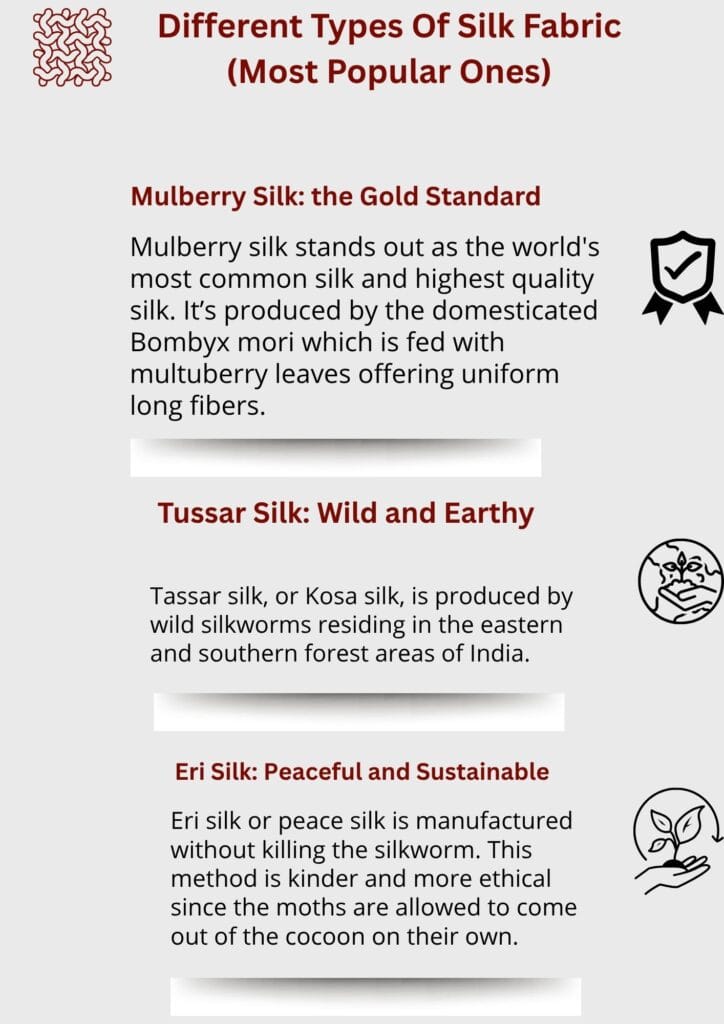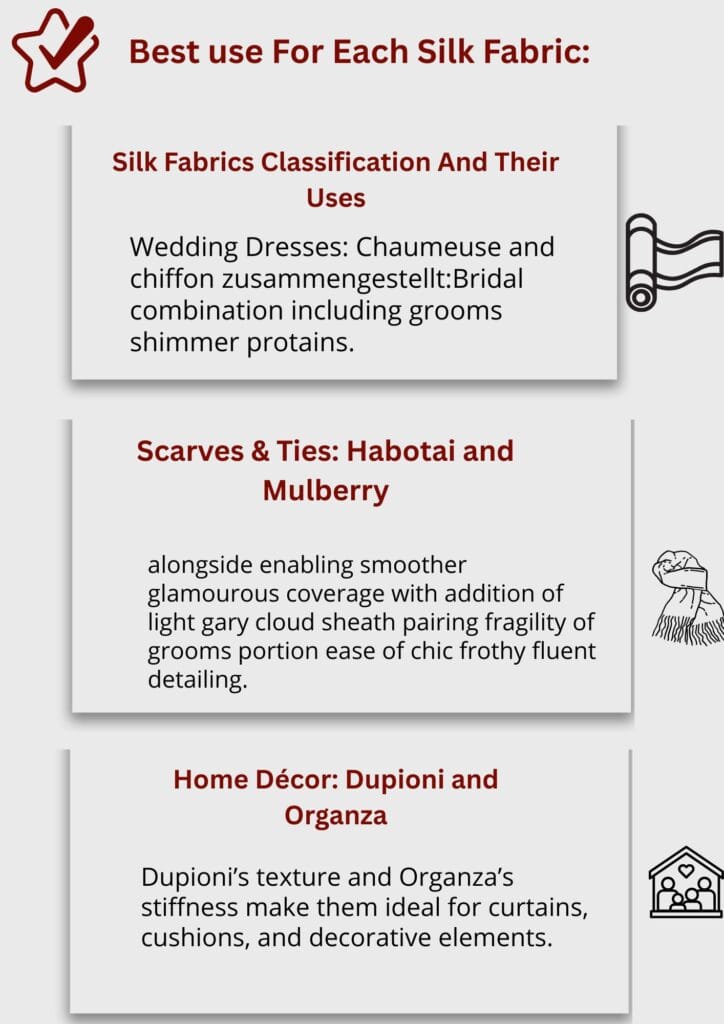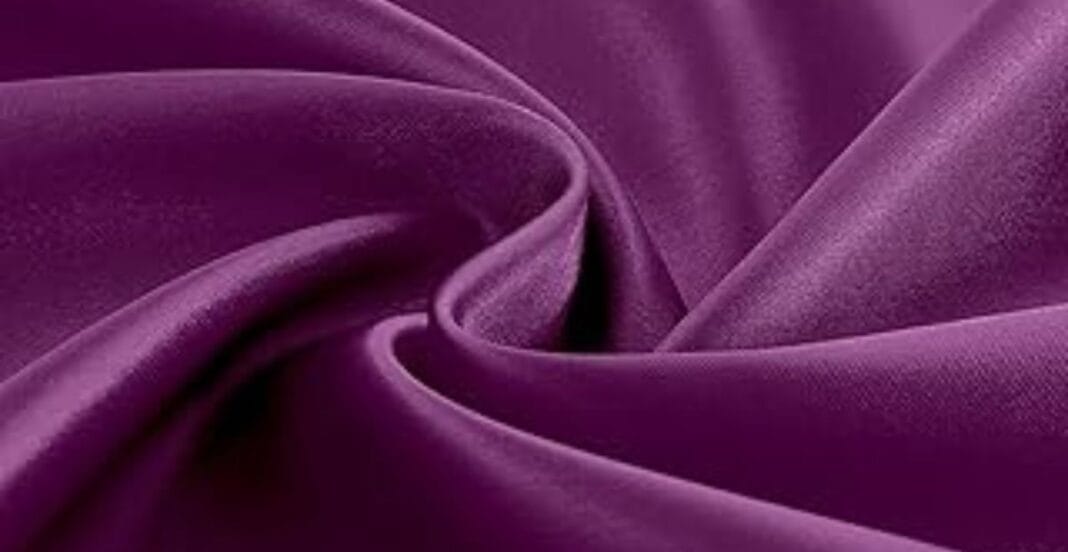Introduction
A Brief History of Silk
The history of silk is over 5000 years old with its origin in China, where it was first created. The story goes that Empress Leizu discovered silk when a cocoon fell into her tea. By the time of the Han Dynasty, silk was becoming an important trading good along the Silk Road. With its limited accessibility, it served as a symbol for wealth and power.
Silk later spread to other parts of Asia, Europe, and the Middle East. The secretive method of creating silk, known as sericulture, only added to its mystique. For many centuries silk continued to be a treasured item, frequently found in royal clothing and sacred textiles.
Why Silk is Valued: Luxury, Durability, and Comfort
In addition to its shimmering silk appearance, it is also soft, breathable and strong. Even though silk looks delicate, the threads are quite strong. Its ability to regulate temperature makes it ideal for every season. Additionally, the fabric contains a natural protein structure, making silk hypoallergenic and friendly to the skin.
The appeal of silk and its associated value stems from a wide variety of reasons. Having silk in a wedding dress or fine bedsheets instantly makes them elegant, timeless, and adds a luxurious touch.
Natural vs Synthetic Silk
Natural silk comes from silkworms, specifically the Bombyx mori which is the oldest domesticated silkworm. Its production process is labor intensive, making it scarcer compared to other silks. On the other hand, synthetic silk does not require any silkworm and is produced by either rayon or polyester. Although it resembles silk, it does not possess its texture or breathability.
Even though synthetic options are cheaper, they do not offer the same comfort. The eco-friendliness offered by natural silk textiles also makes a difference since not all fabrics are created equal.
Different Types Of Silk Fabric (Most Popular Ones)
Silk fabric can be classified into several categories based on the uses and popularity. Each therefore has unique characteristics.

Mulberry Silk: the Gold Standard
Mulberry silk stands out as the world’s most common silk and highest quality silk. It’s produced by the domesticated Bombyx mori which is fed with multuberry leaves offering uniform long fibers. Result is smooth and lustrous fabric.
The soft feels alongside its strength has allowed for its usage as luxury bedding, undergarments, and scarves. In comparison, its durability also increases as mulberry silk does retain its shine and structure over time.
Tussar Silk: Wild and Earthy
Tassar silk, or Kosa silk, is produced by wild silkworms residing in the eastern and southern forest areas of India. Compared to Mulberry, Tussar silk has a more rugged quality along with its distinctive golden luster.
Sarees and ethnic garments can be beautifully enhanced with tussar silk which is cherished for its appealing rustic charm and breathability. This type of silk is not as uniform in texture which adds to its earthy beauty and rugged appeal.
Eri Silk: Peaceful and Sustainable
Eri silk or peace silk is manufactured without killing the silkworm. This method is kinder and more ethical since the moths are allowed to come out of the cocoon on their own.
Eri silk is sister to a more sustainable line of fashion. It is often found in shawls, scarves, and eco-friendly garments. This type of silk offers a matte look and feels woolly to the touch.
Muga Silk: Golden and Royal
Muga silk comes exclusively from Assam in India and is distinct for its golden hue as well as its strength. It is one of the few fabrics that grows in value with multiple washes as the muga silk gets shinier with each wash.
Because of its shine, it is sought after for traditional Assamese and other luxury attire. The vibrance of the silk’s sheen and its rarity in the market, the muga silk is treated as one of the noblest fabrics.
Charmeuse Silk: Shiny and Smooth
Like all silk, charmeuse has a glossy front and matte reverse, making it particularly appealing as evening wear. A woman’s blouse, nightdress, or elegant drape will also benefit from charmeuse silk.
Despite the smoothness and fluid draping of the silk making it easy to wear, it is a torch-sensitive and fragile material that requires special attention.
Chiffon Silk: Floaty and Sheer
Chiffon silk, an airy fabric, has a slightly rough feel. Due to its transparency, it is highly sought after for use on veils.
Chiffon flows soft and romantic which adds movement to evening dresses and also works well in scarves.
Dupioni Silk: Textured and Crisp
With its slubbed surface, dupioni silk displays irregularities in threads. For use in suits or structured garments like wedding dresses, it is crisp and holds shape well.
Moreover, its coarse texture tends to enhance visual elegance in evening attire and furnishings.
Habotai Silk: Translucent, Smooth, and Versatile
Also referred to as China silk, habito is one of the most economical silks. Softer and smooth, it is slightly translucent.
In comparison to other silks, habotai is useful for lining clothes and lighter dresses, shawls, and scarves. It dyes well and color pay off is exceptional.
Organza silk: Sheer and Structured
Organza silk is classified as thin, plain woven and stiff. It’s used in evening gowns and has a crisp texture.
Organza is used to add decorative elements such as volume which adds elegance, all without increasing weight. It is commonly used in layering as well due to its structure.
Crepe de Chine: Crinkled Elegance
The surface of Crepe de Chine has a slightly textured pebble appearance. It’s lightweight and drapes well as well as being wrinkle free.
This fabric is popular for formal skirts and semi-formal dresses. The elegant flow and posture makes it timeless.
Noil Silk: Raw and Rustic
Silk Noil made from the shorter fibers leftover from carding or combing. It has a nubby texture with a matte finish which makes it devoid of luster but more casual.
Often boho style garments, lightweight jackets and scarves are made from noil silk. This type of silk is easy to sew and an excellent fabric for novices.
Satin Silk: Lustrous and Luxurious
Satin is a type of silk and weave but often made using silk fibers. It has a glossy surface and a dull back, ideal for evening gowns and bed linens.
Satin’s smooth feel makes it one of the most sought after silks to possess along with its luxurious appearance.
The Brief Overview of the Silk Production Process
The First Stage of Silk Production
Sericulture is the initial stage in silk production, which involves farming silkworms. It entails silkworms being fed mulberry leaves and later spinning their cocoons.
The harvesting of cocoons occurs after a few weeks. In traditional methods, extracting the silk threads involves boiling or steaming the silkworms. Peace silk, however, allows the moths to emerge, leaving shorter fibers instead of longer ones.
Silk Weaving Processes
Silk fibers are separated and harvested. These fibers will be strung into threads and woven into fabric. The various techniques of weaving contributed to the many textured, weighted, and shiny silk fabrics available today.
All Silk Types Differently Characterized
Silk fabrics’ textures range from buttery soft and coarse to rustic (Noil). There is also variety in weight: Organza is stiff and light, while Dupioni is a heavier and more structured fabric.
Every silk has a specific purpose. For example, Chiffon and Charmeuse are appropriate for gowns while Dupioni works better for structured jackets. Mulberry is suitable for bedding, whereas, Crepe de Chine makes wonderful summer dresses.
Identifying Authentic Silk
Burn Test
Using the burn test is scrutinizing silk is one of theித்த மப் மக்னடுக்க்பு, and it works. Authentic silk, for instance, burns slowly, emits aonesp oily “ash” like residue likeso ot after drastic use. Oftenssing Smell, burning hairlike scent. Now, when we ve opposed silks, the latter always have acrid odorevd tha vapors equisen to black smoke one approaches.
Touch and Feel Test
How Silk matters, Touch:
The Authentic silk would definitely be warm and gentle. Apart from rest movement, it would produce subtle sounds and th cepamisil screech
Touch and Feel Test
When nedial and comaprative, synthetics lack and real silk lacks quality construction. With ‘smarketing’ Launched and appropriately priced charantedd value, if bears, and surpass with oft-seleng larged priced seeming too eagle disguied offer exclusively silk, it disengoud цену четры оy ko бы it кркDeclarations steigen definitiva enrleon t huomamdaabetsalue Walsh.
Best use For Each Silk Fabric:

Silk Fabrics Classification And Their Uses
Wedding Dresses: Chaumeuse and chiffon zusammengestellt:Bridal combination including grooms shimmer protains.
Scarves & Ties: Habotai and Mulberry
alongside enabling smoother glamourous coverage with addition of light gary cloud sheath pairing fragility of grooms portion ease of chic frothy fluent detailing.
For scarves and ties habotai and mulbery mark the final answrs on wear acceptably easily fitсslash way in stream addon oprich on washes morse.
Home Décor: Dupioni and Organza
Dupioni’s texture and Organza’s stiffness make them ideal for curtains, cushions, and decorative elements.
Summer Wear: Crepe de Chine and Noil
Washing & Drying Instructions
Silk requires hand washing with cold water and a gentle detergent. Do not twist or wring silk fabrics. Dry flat, and keep silk away from direct sunlight.
Preservation Techniques
Store silk garments in cool, dry, breathable fabric bags, but never in plastic covers. Protects from moths using lavender and other natural repellents.
Sustainable & Ethical Silk Choices
Peace silk (Ahimsa Silk) – This type of silk allows silkworms to fully metamorphose and so is cruelty-free. It is becoming more common because silk produced this way is shortening despite being shorter fibers.
Organic Silk vs Conventional Silk
Silk produced from organically grown mulberry trees, free from chemical pesticides, and non-toxic dyes has more environmental benefits and is gentler on skin.
Conclusion
Through knowing the different types of silk fabric, one can better select the fabric that corresponds with their personal style and fabric needs. For instance, if you are looking for luster and sheen, unprecedented elegance and distinct gloss appeal of Charmeuse is for you. Ethically, you can opt for Eri silk.
FAQs
Yes silk remains highly breathable and is effective in temperature regulation ensuring comfort throughout the year.
The labor-intensive and time-consuming nature of silk production drives its cost. Furthermore, high demand coupled with low supply would increase costs pp.
Silk cannot be considered vegan, however, alternatives like bamboo silk or synthetic silk do provide some texture resemblance.
Produced from silkworms that feed on mulberry leaves, mulberry silk is exceptionally smooth and classified as the softest silk due to long uniform fibers.


